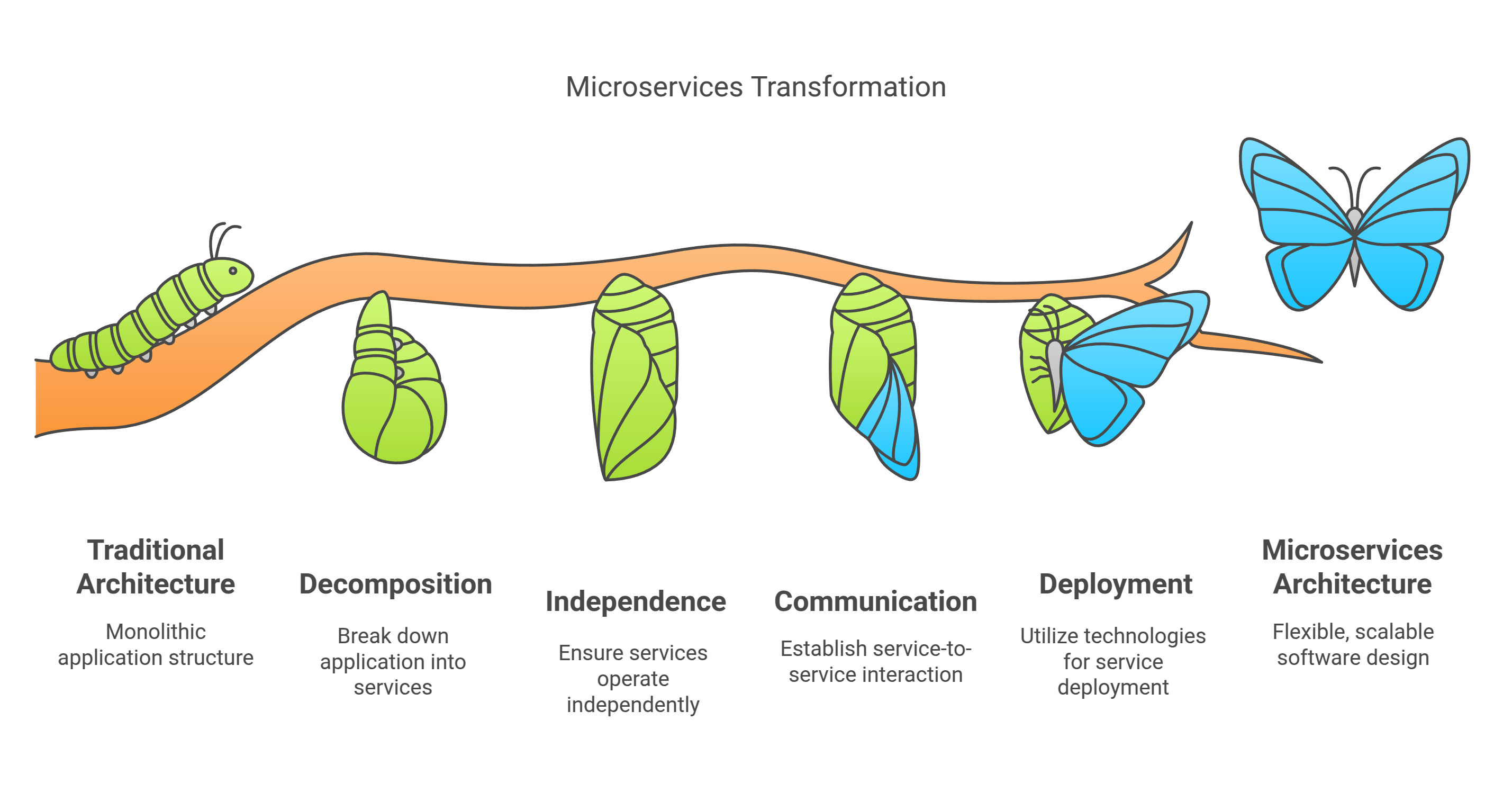
Microservices architecture is transforming the way modern applications are built. Unlike monolithic architecture, where the entire application is built as a single unit, microservices split the application into smaller, independent services. Each service handles a specific business function, operates independently, and can be developed, deployed, and scaled individually. This modular approach brings significant benefits in terms of scalability, flexibility, and maintainability.
In this article, we'll explore why microservices are gaining traction in software development and how they are revolutionizing the way we build and maintain applications in a more agile and efficient manner.

Microservices are small, self-contained units of functionality that work together to build a complete application. Unlike traditional monolithic architectures, where all features and functionalities are bundled together into a single, tightly integrated unit, microservices allow developers to break the application into independent services that can communicate via APIs.
The rise of microservices has brought numerous advantages for developers and businesses alike:
Here's an example of a simple microservice written in Node.js using Express to handle a specific feature. In this example, we have a "User Service" that handles user-related operations.
// user-service.js
const express = require('express');
const app = express();
const PORT = 3001;
app.get('/users', (req, res) => {
res.json([
{ id: 1, name: 'John Doe', email: 'john@example.com' },
{ id: 2, name: 'Jane Smith', email: 'jane@example.com' },
]);
});
app.listen(PORT, () => {
console.log(`User Service running on port ${PORT}`);
});
In a microservices architecture, each service can interact with other services via APIs or messaging queues. For example, if our "User Service" needs to interact with a "Product Service" to display a user's order history, it will call the Product Service's API to retrieve the necessary data. This modular approach allows teams to work independently on different services, making it easier to scale, update, and maintain the system.
As a Software Engineer at IRI, the role involves developing innovative, scalable solutions for data and software validation in resource tracking. With expertise in web development and engineering, the software engineer plays a key role in building high-quality solutions that align with the company’s technological vision and growth.
Smart Fingerprint technology enables fast, secure, and error-free attendance tracking...
Blockchain is a game-changing technology with diverse applications. This blog simplifies what blockchain...
AI Agents are transforming industries by making real-time decisions, automating workflows, and improving efficiency...